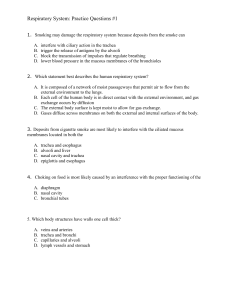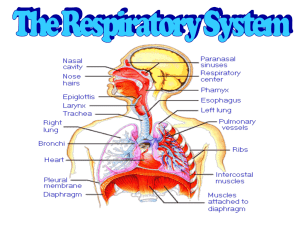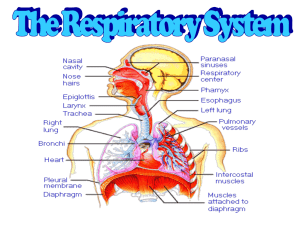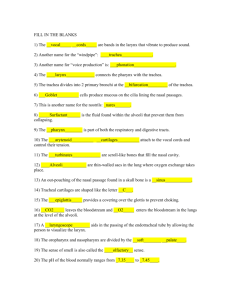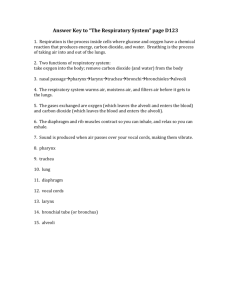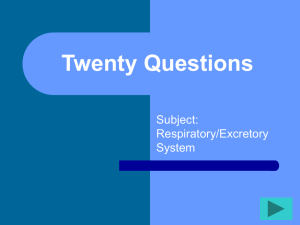Respiratory System: Practice Questions #1
advertisement
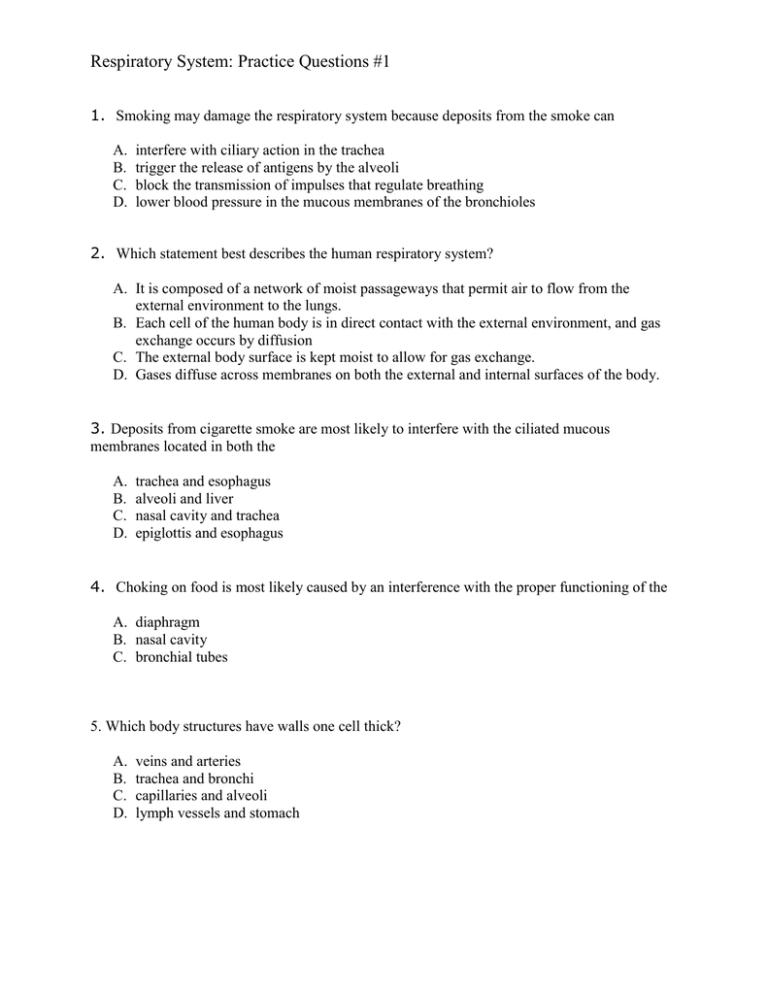
Respiratory System: Practice Questions #1 1. Smoking may damage the respiratory system because deposits from the smoke can A. B. C. D. interfere with ciliary action in the trachea trigger the release of antigens by the alveoli block the transmission of impulses that regulate breathing lower blood pressure in the mucous membranes of the bronchioles 2. Which statement best describes the human respiratory system? A. It is composed of a network of moist passageways that permit air to flow from the external environment to the lungs. B. Each cell of the human body is in direct contact with the external environment, and gas exchange occurs by diffusion C. The external body surface is kept moist to allow for gas exchange. D. Gases diffuse across membranes on both the external and internal surfaces of the body. 3. Deposits from cigarette smoke are most likely to interfere with the ciliated mucous membranes located in both the A. B. C. D. trachea and esophagus alveoli and liver nasal cavity and trachea epiglottis and esophagus 4. Choking on food is most likely caused by an interference with the proper functioning of the A. diaphragm B. nasal cavity C. bronchial tubes 5. Which body structures have walls one cell thick? A. B. C. D. veins and arteries trachea and bronchi capillaries and alveoli lymph vessels and stomach 6. Diagrams A and B represent structures found in the human body. Diagram B represents the functional unit of which structure represented in diagram A? A. B. C. D. structure 1 structure 2 structure 3 structure 4 7. The diagram below represents three human body systems. Which row in the chart below correctly shows what systems A, B, and C provide for the human body? Row System A System B System C A. blood cells glucose hormones B. oxygen absorption gametes C. gas exchange nutrients D. immunity waste removal coordination carbon dioxide 8. Humans breathe more rapidly during exercise than before it because during exercise the blood contains A. B. C. D. an increased level of oxygen a decreased number of red blood cells an increased level of carbon dioxide a decreased amount of hemoglobin 9. The human trachea is prevented from collapsing by the presence of A. B. C. D. mucous membranes cartilaginous rings muscle fibers bony networks 10. Some human structures and their functions are listed below. In a single-celled organism such as an ameba, all these functions can be performed by the A. B. C. D. nucleus ribosomes mitochondria cell membrane Answer Key 1: Respiratory System 1. A 2. A 3. C 4. D 5. C 6. C 7. C 8. C 9. B 10. D
